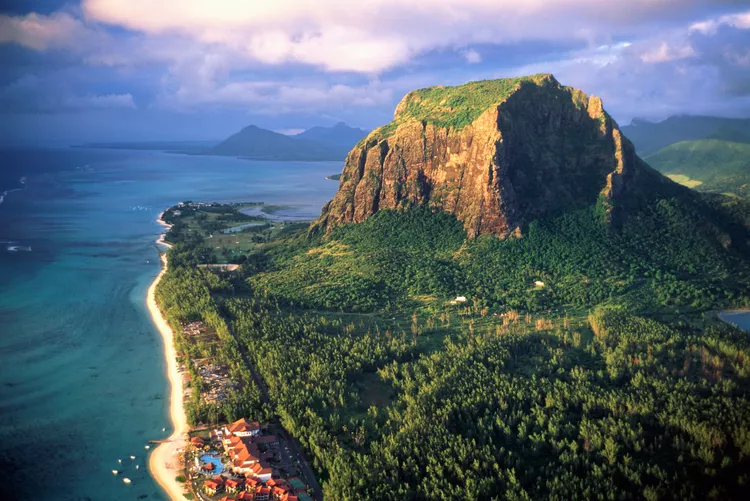1. Overview
Mauritius, an Indian Ocean paradise, offers stunning beaches and diverse adventures.
2. Key Details
Learn about its location, geography, and notable features.
3. Attractions
Discover key attractions including Grand Baie, Île aux Aigrettes, and more.
4. Travel Information
Find out how to get to Mauritius, health requirements, and other essential tips.
Welcome to Mauritius
Mauritius is an Indian Ocean island blessed with paradise beaches and lush rainforests, offering both relaxation and adventure. Luxury resorts promise days filled with sumptuous seafood, spa treatments, and cocktails by the pool. Moreover, adrenaline junkies can take advantage of an astonishing roster of activities ranging from scuba diving to 4×4 adventures and waterfall hikes. Consequently, Mauritius serves as a nature lover’s paradise with its own cast of endemic mammal and bird species. The island’s rich heritage is evident in its fragrant cuisine and colorful festivals influenced by its French, Creole, Indian, and Chinese residents.
Location
Mauritius is strategically located in the Indian Ocean, approximately 500 miles/800 kilometers east of Madagascar and 125 miles/200 kilometers east of Réunion Island.
Geography
With a total land mass of 784 square miles/2,030 square kilometers, Mauritius is approximately 11 times the size of Washington, D.C. The country includes the Agalega Islands, the Cargados Carajos Shoals, and Rodrigues Island.
Capital City
The capital of Mauritius is Port Louis, situated on the northwest coast.
Population
A CIA World Factbook estimate published in July 2017 put the population of Mauritius at just over 1.3 million.
Language
The official language of Mauritius is English; however, it is spoken by less than 1% of the population. The most widely spoken language is Creole, representing 86.5% of the population. Other notable languages include Bhojpuri and French.
Religion
Hinduism is the most practiced religion in Mauritius, followed by Roman Catholicism and Islam, which account for 26.3% and 17.3% of the population, respectively.
Currency
The official currency is the Mauritian rupee. For up-to-date exchange rates, utilize an online converter for convenience.
Climate
Mauritius has a mild tropical climate characterized by two distinct seasons. The rainy season runs from November to April — this is the hottest and most humid period of the year. Conversely, the dry season occurs from June to September, offering relatively cool temperatures. October and May serve as transitional months with variable weather. The rainy season may bring cyclones, affecting the Indian Ocean and Mauritius, yet resorts and homes are constructed to withstand such conditions.
When to Go
Mauritius is a rewarding destination throughout the year; however, the dry winter months (June to September) traditionally provide the best weather, with warm, clear days and pleasantly cool evenings. Enhanced visibility makes this period ideal for scuba diving and snorkeling.
Key Attractions
Grand Baie
Located in the north, Grand Baie is Mauritius’ most popular tourist destination, renowned for its upscale shopping, excellent seafood restaurants, and vibrant nightlife. During the day, visitors can enjoy various watersports, including scuba diving and deep-sea fishing, with the breathtaking public beach at Trou-aux-Biches just a short drive away.
Île aux Aigrettes
This 26-hectare nature preserve, found off the southeast coast, has preserved much of its natural beauty over centuries. It serves as one of the last sanctuaries for rare wildlife, including the giant Aldabra tortoise and the ornate day gecko. The pink pigeon and the Mauritian kestrel, both once near extinction, also inhabit this island.
Le Morne Brabant
This stunning basalt mountain, standing at 1,824 feet/556 meters, is recognized by UNESCO for its beauty and cultural significance. Historically, escaped slaves found refuge in its caves during the 18th and early 19th centuries, making it a symbol of their fight for freedom. A hike to the summit offers stunning panoramic views of the island.
Chamarel
Adventure seekers interested in Mauritius’ mountainous interior should visit Chamarel, a picturesque village known for its rum, authentic Mauritian cuisine, and nearby natural wonders, including the Seven Coloured Earths and Chamarel Waterfall. This village also serves as a gateway to Black River Gorges National Park, offering extensive walking trails through pristine highland forest.
Getting There
The primary entry point for visitors to Mauritius is Sir Seewoosagur Ramgoolam International Airport (MRU), located southeast of Port Louis. Major airlines offering flights to Port Louis include Air Mauritius, Air France, British Airways, and Emirates. Port Louis is typically the first port of call for cruise ships as well. Visa requirements may vary by nationality; thus, check your government website for the latest updates on visa exemptions—visitors from the US, UK, Australia, and Canada can travel without a visa.
Medical Requirements
The CDC urges all visitors to ensure their routine vaccinations are current before traveling to Mauritius. Recommended vaccines include hepatitis A and typhoid. Depending on your activities, hepatitis B and rabies may be necessary. Notably, there is no risk of malaria in Mauritius, making it a safe option for many travelers.





